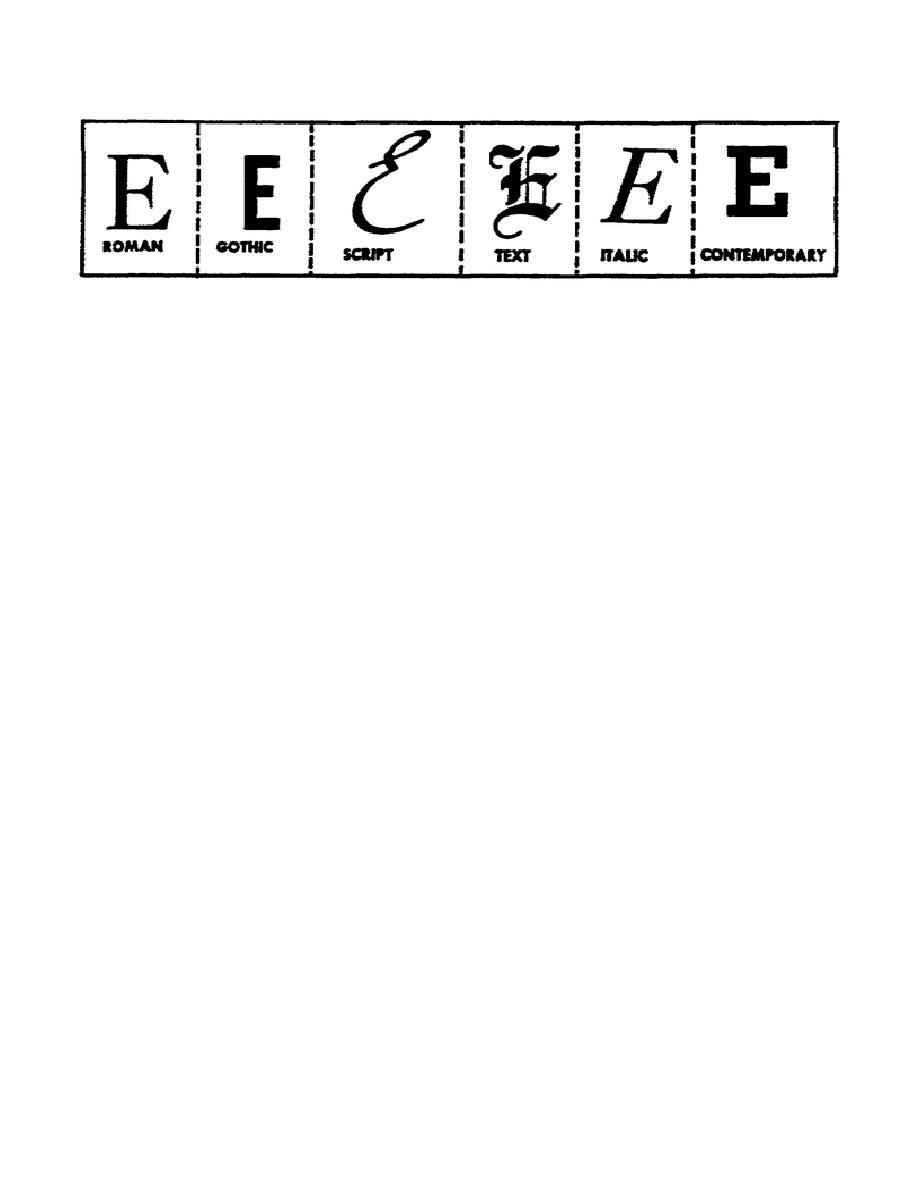
used today.
In general, all letters are classified as one of the six
displayed in figure 1-1.
Figure 1-1.
Six classes of letters
(a) Divide each letter style into two groups, capital letters and
small letters. You can refer to capital letters as upper-case and small
letters as lower-case.
(b) These designations come down from the time when all
typesetting was performed by hand.
The typesetters divided the letters
and put them into two types of cases. In the upper case they stored the
capital letters and put the small letters in the lower case.
b. Roman. Ancient Romans developed and refined our capital (or upper-
case) letters.
These ancient artists carved letters in stone.
As a
guide, they painted the letters to be carved using a flat brush always
held at the same angle. When they moved the brush vertically, it made a
thick stroke. When they moved it horizontally, it made a thin stroke. As
a result, Roman letters are composed of thick vertical strokes and thin
horizontal strokes. The thin lines have cross-strokes at the end. These
cross-strokes are called serifs.
Serifs lend unity to Roman letters,
blend them together, and make them easy to read.
(1) Old style and modern are the two classifications of Roman types.
The chief means of distinguishing between these two classifications is the
serif. Refer to figure 1-2 and compare the serifs. Notice that the old
style letter has softer and more rounded serifs while the serifs on the
modern letter are sharper and the horizontal lines are thinner than the
old style.
(2) Roman letters are most commonly used for the text of magazines,
newspapers, and books.
It was chosen for these purposes because most
people are familiar with it and because Roman letters are the easiest to
read, particularly in small size and lengthy articles.
Some qualities
attributed to Roman letters are: dignity, refinement, and stateliness.
Figure 1-2
1-3
SS0525



 Previous Page
Previous Page
